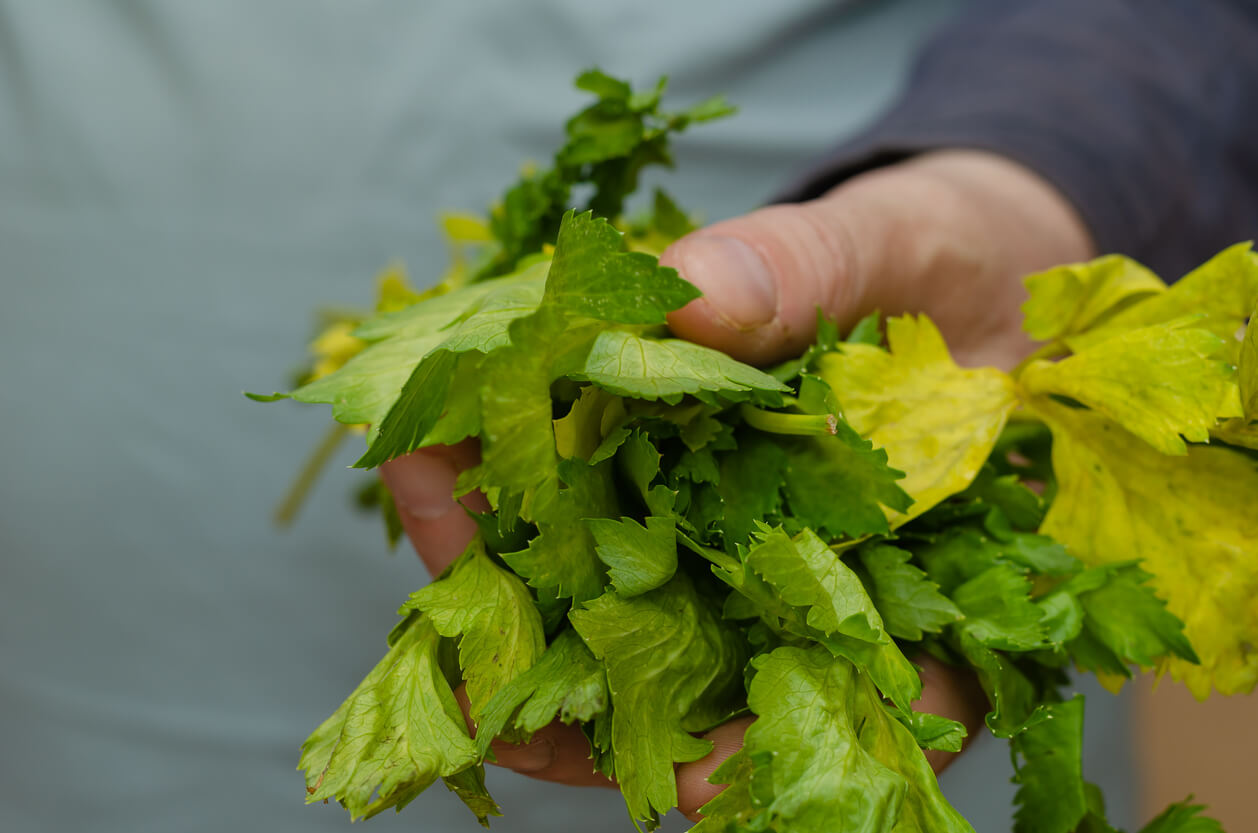
Withering celery
Celery, with its crisp stalks and rich flavor, is a garden favorite that can be susceptible to various pests and diseases. Early detection and preventive care are essential to maintaining healthy celery plants and ensuring a bountiful harvest. Here’s a guide on how to spot, treat, and prevent common celery plant diseases:
Common Celery Diseases
- Celery Leaf Spot (Septoria Leaf Spot):
- Symptoms: Small, dark, water-soaked lesions on leaves that develop yellow halos and can cause leaf drop.
- Treatment: Remove and destroy affected leaves. Apply fungicidal sprays if necessary.
- Prevention: Avoid overhead watering and ensure proper spacing between plants to improve air circulation.
- Early Blight (Alternaria Leaf Blight):
- Symptoms: Circular, dark brown spots with concentric rings on leaves. The spots may enlarge and cause leaves to wilt and die.
- Treatment: Remove and destroy affected leaves. Apply fungicides according to the manufacturer’s instructions.
- Prevention: Choose resistant varieties, practice good crop rotation, and maintain proper plant spacing.
- Cercospora Leaf Spot:
- Symptoms: Small, dark, irregular spots on leaves that can merge and lead to premature leaf drop.
- Treatment: Remove affected leaves and use fungicidal sprays if needed.
- Prevention: Avoid wetting leaves during watering and ensure good air circulation around plants.
- Fusarium Wilt:
- Symptoms: Wilting, yellowing, and dieback of celery plants, often starting on one side.
- Treatment: There is no cure for fusarium wilt; remove and destroy infected plants to prevent spread.
- Prevention: Use disease-resistant varieties, practice crop rotation, and avoid planting in contaminated soil.
Preventive Measures
- Proper Spacing: Ensure adequate spacing between celery plants to promote good air circulation and reduce the risk of disease spread.
- Crop Rotation: Rotate celery with other crops to minimize the risk of soil-borne diseases and reduce pathogen buildup.
- Healthy Soil: Maintain well-drained, healthy soil by incorporating compost or organic matter to improve soil structure and fertility.
- Watering Practices: Water at the base of the plants to keep leaves dry and reduce the risk of fungal infections.
- Sanitation: Regularly remove and destroy any infected plant material to prevent disease spread. Sanitize garden tools and equipment to avoid contamination.
Tending to Your Celery
- Regular Inspection: Regularly check your celery plants for signs of disease or pest damage. Early detection and prompt action are key to effective management.
- Prune Affected Leaves: Remove and dispose of any diseased leaves immediately to prevent further spread.
- Use Resistant Varieties: Select celery varieties that are known for their resistance to common diseases in your region.
With attentive care and proactive measures, you can keep your celery plants healthy and productive. Share your experiences and tips for managing celery diseases in the comments below and help our gardening community thrive!


 Previous
Previous

